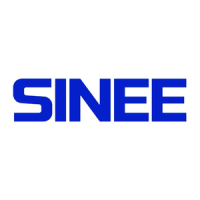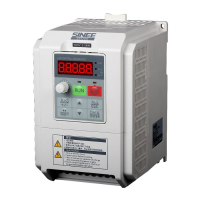Do you have a question about the Sinee A90-4T090 and is the answer not in the manual?
Outlines essential environmental conditions, ventilation, temperature, and mounting requirements for safe and reliable inverter installation.
Details the composition and layout of the main circuit terminals, including power input, output, DC bus, and braking resistor connections.
Explains the functions and wiring of control circuit terminals, covering auxiliary power, analog/digital inputs, outputs, and communication interfaces.
Outlines the step-by-step procedure for commissioning the inverter, including installation, wiring checks, parameter setting, and basic operation.
Provides a checklist of critical items to confirm before turning on the power, covering power wiring, motor wiring, braking unit, control terminals, and mechanical load.
Explains the various methods for starting and stopping the inverter, including keyboard control, terminal control, and communication control.
Explains the importance of motor parameter identification for optimal control performance and details the methods for static and rotary self-identification.
Covers parameters for Motor 1, including motor type, rated power, voltage, current, frequency, speed, winding connection, and power factor.
Covers parameters related to starting and stopping the inverter, such as start-up method, start frequency, DC braking settings, and stop modes.
Details parameters for various protection functions, including overload protection, voltage control options, current limit settings, and retry mechanisms after faults.
Provides information on viewing the types of the last three faults, including fault category, output frequency, current, bus voltage, and running status during the fault.
Explains the necessity and process of self-identifying motor parameters, especially for vector control, to enhance control accuracy.
Lists important precautions before performing self-identification, such as ensuring the motor is stopped, using keyboard control, and setting correct nameplate parameters.
Provides a detailed step-by-step guide for performing both static and rotary self-identification for asynchronous and synchronous motors.
Presents a table detailing fault codes, their causes, and corresponding solutions for diagnosing and resolving inverter abnormal statuses.
Addresses common failure scenarios such as incorrect parameter settings, motor rotation abnormalities, and issues with acceleration/deceleration times.
Outlines essential environmental conditions, ventilation, temperature, and mounting requirements for safe and reliable inverter installation.
Details the composition and layout of the main circuit terminals, including power input, output, DC bus, and braking resistor connections.
Explains the functions and wiring of control circuit terminals, covering auxiliary power, analog/digital inputs, outputs, and communication interfaces.
Outlines the step-by-step procedure for commissioning the inverter, including installation, wiring checks, parameter setting, and basic operation.
Provides a checklist of critical items to confirm before turning on the power, covering power wiring, motor wiring, braking unit, control terminals, and mechanical load.
Explains the various methods for starting and stopping the inverter, including keyboard control, terminal control, and communication control.
Explains the importance of motor parameter identification for optimal control performance and details the methods for static and rotary self-identification.
Covers parameters for Motor 1, including motor type, rated power, voltage, current, frequency, speed, winding connection, and power factor.
Covers parameters related to starting and stopping the inverter, such as start-up method, start frequency, DC braking settings, and stop modes.
Details parameters for various protection functions, including overload protection, voltage control options, current limit settings, and retry mechanisms after faults.
Provides information on viewing the types of the last three faults, including fault category, output frequency, current, bus voltage, and running status during the fault.
Explains the necessity and process of self-identifying motor parameters, especially for vector control, to enhance control accuracy.
Lists important precautions before performing self-identification, such as ensuring the motor is stopped, using keyboard control, and setting correct nameplate parameters.
Provides a detailed step-by-step guide for performing both static and rotary self-identification for asynchronous and synchronous motors.
Presents a table detailing fault codes, their causes, and corresponding solutions for diagnosing and resolving inverter abnormal statuses.
Addresses common failure scenarios such as incorrect parameter settings, motor rotation abnormalities, and issues with acceleration/deceleration times.












